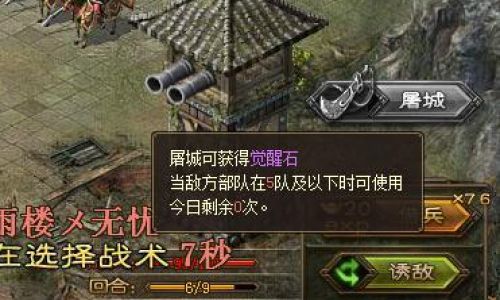In the annals of history, the act of siege warfare has been a pivotal aspect of military campaigns, shaping the course of empires and influencing the flow of civilization. The practice, often synonymous with ‘siege’, ‘conquering’, and even ‘tut-ch’eng’ in its most extreme form, has played a crucial role in expanding empires, consolidating power, and reshaping geopolitical landscapes. This essay delves into the multifaceted aspects of siege warfare, particularly its strategic significance in攻城 (conquering cities) and 屠城 (destruction of cities), highlighting the psychological, tactical, and even philosophical implications.
The Psychological Edge: Fear and Submission
At the heart of any siege operation lies the psychological manipulation of the besieged population. The act of surrounding a city not only cuts off supplies and communication lines but also instills a sense of hopelessness and fear among its inhabitants. The sight of relentless siege engines, relentless bombardment, and the relentless march of enemy soldiers can breed panic and desperation within the walls. In many cases, the mere threat of a siege was enough to induce surrender or negotiation, saving both sides the gruesome reality of a prolonged conflict. This psychological warfare is a crucial aspect of siege strategy, as it leverages the innate human fear of being cut off from the outside world and the uncertainty of an uncertain future.
Tactical Advantages: Cutting Off Supply Lines and Communication
Tactically, the primary objective of a siege is to cut off the city’s access to food, water, and other essential resources. Without these vital supplies, the city’s defenses weaken, and its inhabitants become increasingly vulnerable. The enemy can then launch assaults on vulnerable points or negotiate favorable terms. Additionally, the disruption of communication lines prevents reinforcements from arriving and prevents the city from receiving timely intelligence, effectively turning it into a vulnerable island within a larger conflict. This tactical maneuvering is a microcosm of larger military strategies, where every inch of territory gained or lost can have far-reaching consequences.

Destruction as a Tactical Tool: The Impact of 屠城
While ‘屠城’ may seem morally repugnant to many, it was a strategic tool employed by conquerors seeking to eliminate resistance, demoralize the population, or prevent future uprisings. The destruction of cities during a siege often involved the burning of buildings, massacring of civilians, and desecration of sacred sites. Such acts served several purposes: they eliminated potential future opponents by reducing the size of the population; they sent a clear message to neighboring cities that resistance was not an option; and they created an environment conducive to rapid rebuilding under new rule, thereby facilitating the integration of conquered territories into the empire.
However, it is important to note that while ‘屠城’ may have been a strategic necessity in certain contexts, it also had severe humanitarian consequences. The destruction of cities often led to widespread devastation, displacement of populations, and long-term economic stagnation. These consequences underscore the need for careful consideration and ethical balance in modern military operations.

The Philosophical Underpinnings: Glory and Legacy
Sieges have also been seen as a testament to military prowess and strategic acumen. Conquering a city through siege was often celebrated as a feat of bravery and intelligence, ingraining itself in the annals of history as a marker of greatness for those who achieved it. For conquerors, sieges were not just about territorial expansion but also about establishing their legacy as rulers who could overcome even the most formidable obstacles. This philosophical aspect is reflected in ancient texts and contemporary discussions alike, where sieges are often seen as symbols of power and determination.
The Evolution of Siege Tactics and Technology
Over time, siege warfare has evolved alongside technological advancements. From the use of simple wooden towers to modern-day siege artillery and drones, each advancement has made sieges more efficient and devastating. The development of catapults, ballistae, and advanced fortification techniques has allowed for more precise targeting and longer periods of siege without direct engagement. These advancements have also led to more sophisticated strategies that aim to psychologically disorient and physically weaken enemy positions without direct confrontation.

Ethical Considerations in Modern Times
In modern times, while the principles of siege warfare remain relevant in certain contexts such as counterinsurgency operations or urban warfare, there is an increased emphasis on minimizing civilian casualties and preserving cultural heritage. The Geneva Conventions and other international laws have set guidelines for how conflicts should be conducted, emphasizing the protection of civilians and their property during military operations. This shift reflects a growing recognition that while conquest may be necessary for certain strategic goals, it must be done with due regard for human life and cultural continuity.
Conclusion: A Balancing Act Between Strategy and Ethics
In conclusion, siege warfare in its various forms—from strategic conquests to tactical destructions—has played a pivotal role in shaping history. Its psychological manipulation, tactical advantages, philosophical underpinnings, and technological evolution all contribute to its enduring relevance. However, as we move forward in an era that values humanitarianism and ethical conduct in warfare, it becomes increasingly important to find a balance between strategic necessity and ethical considerations. The legacy we leave behind should not be defined solely by our ability to conquer but also by our commitment to preserving life and culture in our quest for power and expansion.







